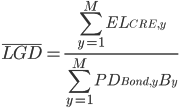Risk Integrated Applies Artificial Intelligence to CRE Risk
Risk Integrated has exploited the advances in machine learning (ML) to characterize the credit risk of commercial real estate lending. This has been achieved by using Risk Integrated’s comprehensive cashflow and risk simulation models in the Specialized Finance System (SFS). With the SFS we generate a massive dataset for pre-training the machine learning models and predict default events based on the characteristics of the underlying properties, leases and loans. A combination of Neural Networks and Fine Decision Trees were found to give the best characterization of the complex nonlinear, discontinuous risk profiles of commercial real estate transactions. This pre-training of the ML models has the advantage of improving the results with the finite real-world data.
In addition to pre-training ML models for credit risk data, Risk Integrated has adopted the machine learning approach to enhance the SFS by greatly reducing the time to get the results of the complex simulation models. Full simulation models have the great advantages of capturing all the details of complex commercial real estate structures, but on-the fly simulation of thousands of detailed scenarios can take several minutes. To speed the computation time, we have trained an ML network on the SFS to emulate the results. Emulation with machine learning has the great advantage that after training, evaluation of the risk requires a single pass through the neural net rather than running thousands of complex scenarios. This computation requires only milliseconds and greatly enhances the ability to run optimization analyses on large portfolios using the full sophistication of the underlying SFS analytics.
Based on these successes, Risk Integrated is now applying its AI tools to other aspects of transforming the commercial real estate market.
Dr. Chris Marrison
CEO, Risk Integrated
Chris.Marrison@RiskIntegrated.com
About Risk Integrated
Risk Integrated delivers [...]









